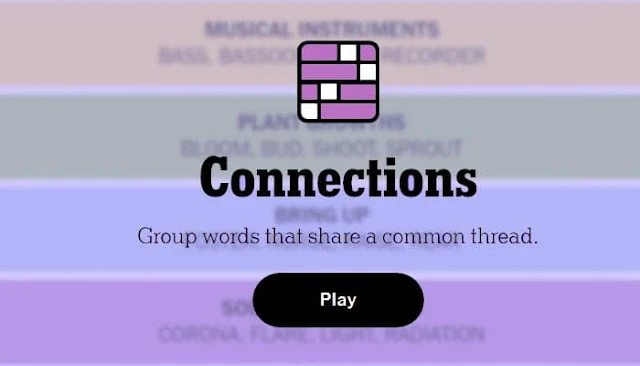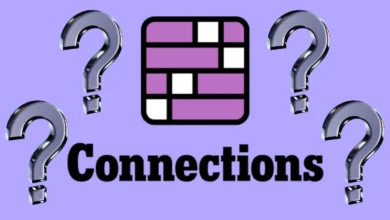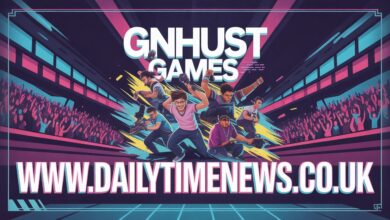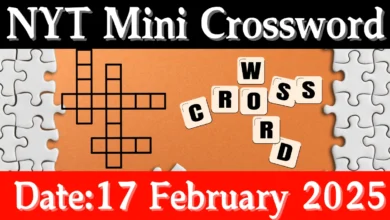Exploring NYT Connections Hints: Unraveling the Hints Behind the Headlines

Introduction to NYT Connections Hint
The New York Times (NYT) has long been a bastion of journalistic integrity, offering a blend of in-depth articles and succinct news updates. Among its many offerings, NYT Connections presents readers with an engaging way to interact with news events. This unique feature not only informs but also encourages readers to think critically about the information presented. Central to this approach is the concept of the NYT Connections hint, which serves as a catalyst for a more profound understanding of current events.
Hints within NYT articles are subtle cues that guide readers to consider the broader implications of the news, often leading to more insightful interpretations. These hints may manifest in various forms, such as background information, context about ongoing narratives, or references to related events and concepts. By integrating these elements, the NYT fosters an environment conducive to in-depth analysis and personal reflection on complex issues. Readers are prompted to connect the dots, moving beyond mere facts to grasp the underlying narratives that shape the news landscape.
Furthermore, the significance of hints lies in their ability to provoke curiosity and encourage exploration beyond the initial headlines. In a world inundated with information, discerning the relevance of hints compels readers to engage with the content on a deeper level. It transforms passive consumption into active participation, promoting a culture of inquiry and critical thought. As readers navigate through the various articles, recognizing and interpreting these subtle hints can unveil layers of meaning that might otherwise be overlooked.
In this manner, NYT Connections and its associated hints play an essential role in enhancing readers’ engagement with the news. By fostering a deeper understanding and encouraging critical thinking, these hints ultimately contribute to a more informed and thoughtful audience, underscoring the importance of journalism in today’s society.
The Role of Hints in Journalism
In the landscape of journalism, the use of hints plays a pivotal role in how stories are crafted and presented to the audience. Hints serve as a guiding mechanism that enriches the narrative, helping readers grasp complex information while providing essential context. This is particularly relevant in the age of information overload, where brevity and clarity are paramount. Hints function as cues or prompts, directing the reader’s attention toward key details that may be critical to understanding the broader implications of the reported events.
The significance of hints extends beyond mere clarification; they also contribute to the narrative richness of journalistic pieces. By incorporating subtle hints, journalists can weave layers of meaning into their stories, encouraging readers to engage more deeply with the subject matter. For instance, in a report exploring political developments, hints might allude to historical precedents or cultural nuances that shape the current situation. Such references not only enhance comprehension but also resonate with a diverse readership.
Moreover, hints in journalism assist in navigating particularly intricate or multifaceted narratives. By presenting concise and thought-provoking hints, journalists can steer readers through convoluted topics, enabling them to follow the storyline with greater ease. This is especially crucial in reporting complex issues such as economic policies, health crises, or international relations, where the interconnectedness of facts may otherwise overwhelm the audience. The effective use of hints also fosters critical thinking, as readers are prompted to ponder the implications and underlying factors surrounding a story.
Ultimately, the presence of hints in journalism elevates the reading experience. They enhance our understanding, allowing us to connect the dots in a way that is both informative and engaging. By effectively guiding readers through the labyrinth of information, journalists fulfill their role as informative catalysts, ensuring that the public stays informed about important issues while appreciating the nuances that accompany them.
Analyzing Recent NYT Articles with Hints
The New York Times (NYT) has a long-standing tradition of crafting articles that not only inform but also engage its readers through the clever use of hints and subtle implications. A recent article focusing on climate change effectively utilized hints to add depth to its narrative. By interweaving statistical data with anecdotal evidence, the author highlighted the urgency of environmental issues while providing a nuanced view that encourages thoughtful contemplation. Phrases like “the unexpected consequences” served as hints that pointed readers toward a deeper understanding of the material while fostering a sense of urgency.
Another compelling example can be found in an article discussing the economic implications of technology advancements. The piece employed hints to illustrate the broader societal impact of automation. Creative use of language allowed readers to infer motivations behind corporate decisions, demonstrating how human interests intertwine with technological progress. The phrase “the balancing act between efficiency and employment” functioned as a hint, guiding readers to consider wider ramifications and fostering critical thinking about the ethical dimensions of technological implementation.
Moreover, an investigative report on social media’s influence in modern politics adeptly leveraged hints to craft a narrative that revealed underlying biases. By presenting snippets of interviews and anonymous quotes, the writer hinted at the complexities surrounding public opinion formation and information dissemination. The careful selection of phrases like “unseen forces” and “subtle shifts in sentiment” invited readers to question the foundational assumptions of media consumption, thereby enriching the discourse surrounding political narratives.
Overall, these recent NYT articles exemplify how well-placed hints can enrich the reader’s experience, guiding them through intricate subjects while fostering a deeper connection with the content. By integrating hints skillfully, the authors not only convey information but also stimulate thoughtful analysis, demonstrating the powerful role that language plays in effective storytelling.
The Psychology Behind Hint Interpretation
The interpretation of hints, particularly in contexts like NYT Connections, is a fascinating psychological phenomenon that involves numerous cognitive processes. When readers encounter hints, whether explicitly stated or subtly suggested, they engage in a complex interplay of perception, memory, and reasoning. This process is influenced largely by prior knowledge and personal experiences, which shape how hints are understood and internalized.
At the core of hint interpretation lies the cognitive framework through which individuals process information. Readers typically utilize schema theory, which posits that information is organized in the mind based on pre-existing frameworks. When hints appear, readers draw on these cognitive structures to make sense of the information presented. This reliance on established frameworks allows for quicker understanding, yet can also lead to biases; the way hints are interpreted might align with a reader’s preconceived notions rather than the intended message.
Moreover, emotional responses play a vital role in how hints are perceived. Certain hints may evoke feelings that colour a reader’s interpretation, reinforcing or challenging their views. Psychological research indicates that emotions can alter cognitive processing, making individuals more or less receptive to specific information. For example, positive hints may boost enthusiasm or acceptance of an idea, while ambiguous or negative hints could foster skepticism or doubt.
Overall, the interplay of cognitive mechanisms and emotional reactions significantly influences how hints are interpreted. In the context of NYT Connections, such dynamics can profoundly affect opinions and sentiments surrounding the articles published. Understanding these psychological aspects highlights the importance of crafting hints thoughtfully to guide readers effectively, fostering a constructive dialogue around the information conveyed.
Hints in Different Journalistic Genres
Journalism encompasses a wide range of genres, each employing hints in unique and tailored ways to convey information, evoke emotions, or provoke thought. Investigative reporting, for instance, often relies on subtle hints to guide readers through complex narratives. Investigative journalists meticulously weave together clues and evidence, presenting hints that encourage readers to question underlying issues. These hints are rarely explicit; instead, they reside within the context and subtext, demanding critical engagement from the audience. This genre’s effectiveness lies in its ability to unravel layers of truth, where each hint serves as a breadcrumb leading to a comprehensive understanding of intricate stories.
In contrast, feature stories exemplify a different approach to hinting. Here, hints are often used to evoke imagery and emotional connections. Writers employ descriptive hints that resonate with readers, painting vivid pictures of people, places, and situations. The subtlety of such hints creates a sensory experience, engaging the audience on a personal level. In this genre, hints can also pertain to themes and messages that are gradually revealed, allowing readers to form their interpretations while maintaining a connection to the narrative.
Opinion pieces represent another distinct genre where hints play a crucial role. Writers utilize hints to shape arguments, guiding readers toward their conclusions without overtly stating them. This method can involve subtle references, anecdotal evidence, or implications that nudge readers to align with the author’s perspective. The efficacy of hints in opinion writing lies in their ability to persuade while fostering a sense of autonomy in the reader’s thought process.
Across these journalistic genres, the use of hints enhances storytelling, enriching the reader’s experience. The integration of hints not only provides depth to the narrative but also cultivates a more engaging and interactive reading journey. Each genre showcases the versatility of hints, illustrating their function as essential tools that craft the fabric of journalism.
Challenges in Using Hints Effectively
Journalists often employ hints as a tool to engage readers, encourage curiosity, and invite critical thinking. However, utilizing hints effectively comes with its own set of challenges. One of the primary issues is the ambiguity that can arise from vague or poorly constructed hints. When hints lack clarity, they run the risk of leading readers astray, resulting in misinterpretation. This can create confusion and diminish the reader’s trust in the publication, particularly in the context of NYT Connections, where the integrity of the message is crucial. Ambiguous hints can manifest as unclear language, obscure references, or overly complex metaphors, which detract from the main message and potentially alienate the audience.
Another significant challenge is the balance between hinting and providing straightforward information. While hints can engage readers, journalists must ensure that they do not obscure essential facts. In some instances, an over-reliance on subtlety may result in critical information being lost or overlooked. This is particularly relevant when parsing complex stories that require clarity for audience comprehension. Striking this balance is vital to maintaining the informative role of journalism while still capturing the audience’s interest through nuanced storytelling.
Furthermore, the cultural and contextual factors that influence the interpretation of hints cannot be overlooked. Different audiences may draw various conclusions based on shared knowledge, experiences, and cultural backgrounds. This variability poses a challenge for journalists aiming to provide a consistent message through hints. Therefore, understanding the audience and tailoring the hints accordingly is essential to avoid miscommunication.
In conclusion, while hints can enhance the storytelling process in journalism and are an integral aspect of NYT Connections, the challenges of ambiguity, excessive subtlety, and audience interpretation must be navigated carefully to ensure effective communication.
Tips for Readers: How to Spot Hints
In the realm of journalism, subtlety often plays a critical role in how information is presented. Readers of the New York Times (NYT) can enhance their understanding of articles by learning to spot and interpret hints that are woven into the text. One effective strategy is to pay close attention to the language used by journalists. Look for adjectives, verbs, and phrases that may suggest underlying meanings or sentiments. For instance, words like “notorious,” “rising,” or “controversial” could indicate more than just a factual reporting; they can provide context that hints at the sentiment or perception surrounding the subject matter.
Another approach to enhancing your critical reading skills is to consider the overall structure of the article. Often, the introduction and conclusion can serve as key areas where hints are placed. Take note of how the main ideas are introduced; they may set the tone and shape the reader’s interpretation of the subsequent information. For instance, an article opening with a poignant anecdote may be hinting at a broader societal issue that is to be explored within the text.
Context is also invaluable when interpreting hints. Being aware of current events, historical background, and the perspectives of different stakeholders can enable readers to make connections that reveal deeper meanings. Paying attention to supplementary materials, such as sidebars or graphs, can enhance one’s understanding and may serve as additional hints about the main article’s content.
Lastly, engaging with other readers or participating in discussions can provide further insights. Various interpretations can illuminate hints that one may not have noticed initially. By combining these strategies, readers can become adept at recognizing the subtle nuances presented in NYT Connections Hints articles, allowing them to uncover valuable information hidden within the text.
Case Studies: Successful Hint Utilization
In the realm of journalism, the effective use of hints plays a pivotal role in shaping reader perception and engagement. The New York Times (NYT) has become a benchmark in this regard, particularly through its strategic integration of the nyt connections hint in various articles. An exemplary case is the coverage of economic trends where writers employed subtle hints to guide readers towards deeper insights without overwhelming them with jargon.
One such article dissected the implications of inflation on consumer behavior. The authors artfully embedded hints within the narrative, subtly signaling key economic indicators and their relevance to readers. By framing these hints in a digestible format, the authors not only informed but also engaged the audience, prompting them to explore related concepts and better understand complex economic realities. The successful utilization of the nyt connections hint in this context resulted in increased reader retention and a notable uptick in commentary and online discussion, indicating a higher level of engagement.
Another illustrative example involves coverage of a major political event. The journalist used hints to steer readers towards significant underlying themes, such as historical precedents and societal impacts. For instance, references to prior elections served as hints that enriched the analysis, allowing readers to draw connections and formulate their own interpretations. This approach was particularly effective in fostering a deeper understanding of the narrative, resulting in heightened reader interest and interaction. The natural integration of hints ensured clarity while maintaining narrative flow, showcasing how thoughtful hint utilization can significantly enhance a reader’s experience.
These case studies exemplify the effectiveness of utilizing hints within NYT articles. By weaving hints seamlessly into the narrative, the writers not only facilitated comprehension but also elevated reader engagement. As journalism continues to evolve, the strategic use of the nyt connections hint serves as a compelling strategy for fostering informed dialogue among audiences.
Conclusion: The Future of Hints in Journalism
As we advance further into the digital age, the role of hints in journalism is poised for substantial evolution. The increasing prevalence of social media and instant information sharing has fundamentally changed how audiences engage with news content. Given these dynamics, the use of hints—such as those found in NYT Connections—becomes increasingly significant. They not only capture attention but also guide readers through complex narratives. This is particularly crucial in an environment where information overload is rampant.
Emerging trends suggest that journalism will continue to embrace these subtle cues to enhance audience engagement. The art of crafting effective hints may become a defining skill for future journalists, as they work to maintain clarity and interest in their storytelling. Hints can serve as navigational tools that help audiences discern the relevance of information, thereby facilitating a deeper understanding of topical matters. Furthermore, as interactive platforms gain traction, hints in the form of multimedia elements—videos, infographics, and interactive timelines—will likely become commonplace, enriching the user experience.
Moreover, the evolving nature of consumer behavior will necessitate that journalists adapt their strategies to meet the needs of diverse audiences. As more people consume news through mobile devices or rely on tailored content algorithms, the hints embedded in articles must be concise yet impactful. NYT Connections exemplifies how these cues can be integrated into broader narratives, leading to more meaningful content interactions. This innovation is vital for retaining audience loyalty in an increasingly competitive digital landscape.
In conclusion, as the media landscape shifts, the role of hints will continue to intertwine with journalistic practices. Adapting to technological changes and audience preferences will define the future of hints in journalism, ensuring that they remain a powerful tool for effective communication and engagement.
You May Also Read This Dailytimenews.



